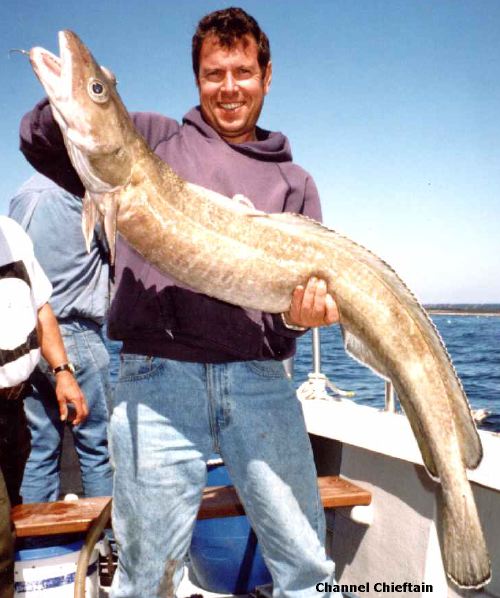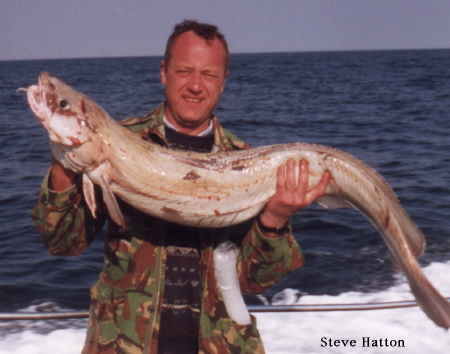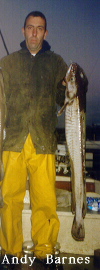Identification:
Member of the cod family.
The body is long and slender with mottled green/brown appearance. Flanks are lighter with brownish blotches, belly is white. Has a characteristic dark blotch at thr rear of both dorsal fins.
There are two dorsal fins and one anal fin. The tail fin is rounded. The second dorsal and anal fin are feathery and extend almost to the tail, both are white edged. The lateral line is arched over the pectoral fin
Young fish have a yellow/olive colouration with a lilac hue.
The upper jaw is slightly longer than the lower, and has one barbel on the chin. Needle sharp teeth.
Breeding:
Spawning normally occurs March - June in up to 200m of water. Ling have particular spawning grounds in the North Sea and Icelandic waters. Up to 60 million eggs laid by each female. Each egg is bouyant and will float amongst the plankton for around 10 days . Hatched fish grow rapidly reaching approx. 8" in the first year.
Habitat:
Adult ling live mainly in very deep water up to 400m . Smaller, younger fish will frequent shallower water under the protection of rocky ground. Adult ling are nearly always found where there are heavy rock formations or big wrecks. Unlike the conger, the ling does not live in the wreck or a hole but prefers the cover of seaweed.
Food:
A voracious eater, the ling will feed on all kinds of fish from cod and pout to flatfish and octopus. Occassionaly feeds on crustaceans and starfish.
Range:
Small ling all around the coast of Britain. Aldult ling are abundant in very deep water around Scotland, the South and West coasts of Ireland, South West England and English Channel.
Additional Notes:
Excellent eating.....
|


